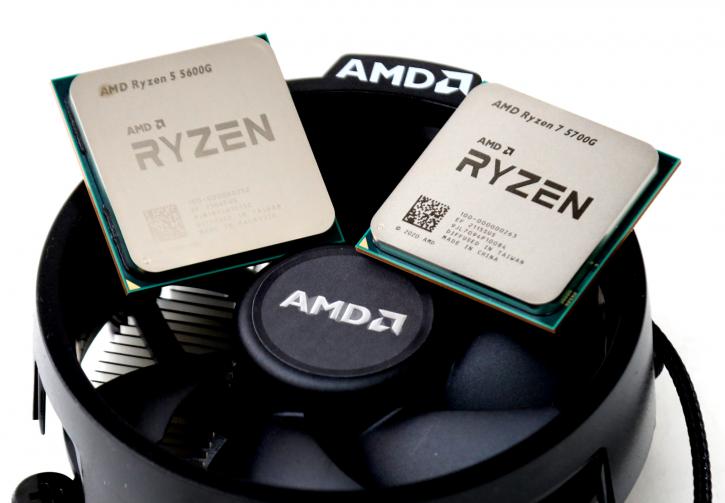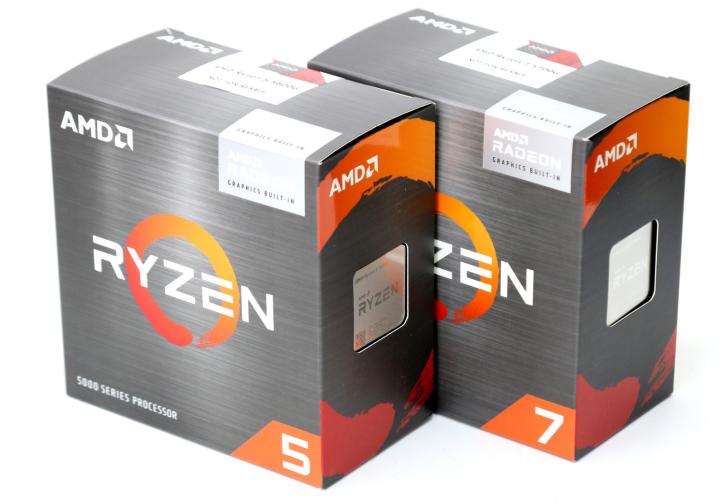Introduction
AMD Ryzen 5 5600G and 7 5700G processor reviews
It's time for some new reviews, yes announced a while ago, but now available in retail are the Ryzen 7 5700G (8c/16t) and Ryzen 5 5600G (6c/12t) APUs. These puppies come with integrated Vega graphics. And target high-performance PC users that don't require dedicated graphics. AMD recently introduced the AMD Ryzen 5000 G-Series Cezanne, the Successor to Ryzen 4000 G-Series (Renoir), Desktop Processors, with Radeon Graphics. AMD at the time announced these processors in three series, Ryzen 3 5300G with 4c/8t, Ryzen5 5600G with 6c/12t, and Ryzen 7 5700G with 8x/16t. The product has been developed under codename Cezanne provides the Ryzen 5000 processors (ZEN3) with an integrated Vega GPU. The processors get a TDP of 65W; there will also be a GE variant of each SKU with a lower TDP of 35 watts. The series initially launched as OEM only but now finds its way to retail.
They are ZEN3-based but do not support PCIe Gen 4.0. Also, if you decide to buy one, keep in mind that the IGP requires a B550 motherboard with a DP/HDMI connection, which most X570 motherboards lack. Anyway, now that we've cleared everything up, let's have a look at what AMD has to offer.
It has only been four years, my fellow gurus; 2017 was the year when AMD released its first-generation ZEN-based processors. These are 7nm ZEN3 based, and that means overall, this processor series is to bring massive single and multi-thread workload performance gains. And where Intel has gone from tic-tock to tock tock tock tock tock .... AMD has been applying a tick almost every year, and that is wondrous. For those that I just lost here, a tick would be a new architecture; a tock is an architecture refresh. And not just that, AMD has been venturing hard on new fabrication processes available. Ergo they're already using refined 7nm production with 5nm in the vicinity, whereas Intel's current desktop processors are still fabricated at 14nm. AMD still had a few architecture disadvantages; for you, the Guru3D reader mostly presented itself at CPU-bound gaming, whereas Intel has had the performance lead.
ZEN3 architecture series processors combined with Vega CUs
AMD has been talking about ZEN3 with a smile on its face for quite some time now, and for good cause. ZEN was amazing, ZEN2 was excellent, and ZEN3 is just outstanding. ZEN is, of course, the codename for the CPU architecture. ZEN3 promised a new architecture with higher IPC (raw core for clock performance) coupled with chiplet designs that give higher yields. AMD has consistently pushed the boundaries of chip manufacturing foundries, and let's face it, 7nm production has been a sweet spot for AMD.
Cezanne features an integrated graphics solution based on Vega architecture that has 8 compute units (CUs) = 512 shading processors that run at up to 2.0 GHz in the 5700G; and Vega 7 x 64 shader cores = 448 Shaders in the 5600G. This article employs the same storyline for all of our ZEN3 CPU evaluations. In this post, we put the following to the test:
- Ryzen 5 5600G (6c/12t) priced at 259 USD
- Ryzen 7 5700G (8c/16t) priced at 359 USD
We’ll go into detail on the next pages. The Ryzen 3000 series 5, 7, and 9 processors are six up-to sixteen-core processors, competitively priced combined with a proper performance increase over the last generation products.



